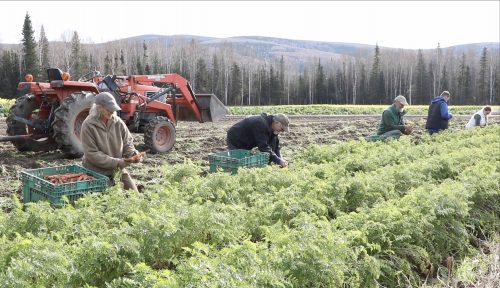Increasing food security in Alaska
April 16, 2020

Alaska agriculture provides only 5% of the food consumed in the state. The rest is flown, barged or driven in.
A new documentary by Amanda Byrd of UAF's Alaska Center for Energy and Power explores some of the challenges Alaska farmers must overcome to produce food for their communities. Obstacles include wind, bison, moose, energy and water.
Only a fraction of the carrots that Alaska consumes are actually grown in the state, even though Alaska carrots have the highest sugar content due to the high latitude. Most carrots are imported from California. Peonies are Alaska’s largest agricultural export, and climate change is changing the risks associated with the flower crop. Only one U.S. Department of Agriculture-approved dairy remains in the state.
Growing more food in the state could ensure food is always on the shelves, especially during a natural disaster like an earthquake or a global pandemic like COVID-19.
The documentary was funded by AgriLogic Consulting and the USDA Risk Management Agency.
Watch the documentary here.


